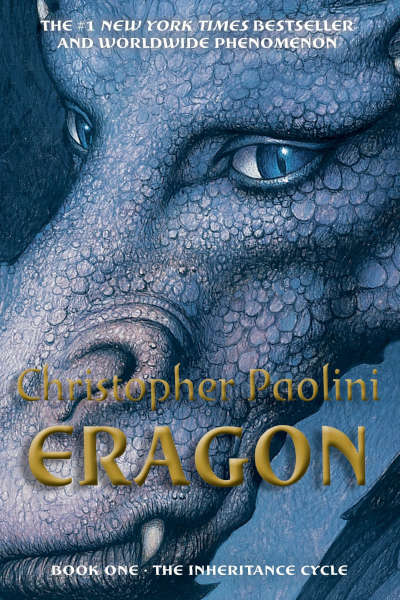Eragon

I remember when Eragon by Christopher Paolini blew up. I was in college. I remember friends and family telling me I must read this book. They told me it was written by a teenager. They said it was better fantasy than even seasoned authors were writing.
They were wrong.
At 15, most of us were not writing 500+ pages of epic fantasy. I applaud Paolini for his skills at that age. He was well beyond his years. The problem was that Eragon needed an editor who was vicious. A good editor who could look a kid in the eye and tell him what was wrong. Or, good beta readers. If you’re going to jump into the big kids’ pool, you can’t be wearing your floaties when you do.
Eragon is best marketed as a young adult novel. It’s not Tolkien or Martin.
Most readers will love the book if they devoured it at a younger age and it either introduced them to the joy of reading or the world of fantasy. Adults who are a bit more well read will see its many flaws. If I had read it 15 years ago, I may be singing a different tune.
I picked up the book back in college. I’d always intended to read it. But, it got lost in the steady stream of books through the college years. Like most books in my collection, it survived many shelves at the various places I’ve lived. It was packed and re-packed as I moved. And, I finally made a decision to read it as I dusted it off during my tidying journey.
Eragon is standard fantasy. It follows a teen boy named Eragon and his dragon named Saphira. An old man teaches him the ways of becoming a dragon rider, the secrets of a gifted few thought to have died out long ago. There’s nothing particularly groundbreaking. It’s like Star Wars meets Lord of the Rings with a dragon. It’s your classic hero’s journey that crosses vast swathes of land over many months, all culminating in an epic battle in the end.
There’s nothing new under the sun. Yes, I know. I’m okay with rehashing plots from existing fantasy works. What matters is the story. Plot is what happens to the characters. Story is how the characters react and grow because of or in spite of the plot. Aside from Murtagh, one of the secondary characters, no one grows. He was the only character that I was invested in.
The pacing made reading a bit more of a chore than it should’ve been. As is often the case with young writers, Paolini relied too much on describing irrelevant details instead of focusing on the narrative. A good editor would have used her red pen to slash 100-150 pages worth of words from this book. I can read a well-written novel of equal length by a great author, such as Brandon Sanderson, in half the time it took me to sloth through this work.
It was not without its high points. The magic system was well thought out. There were real, physical consequences, which I love far more than magic being available just because. And, the author hit all of the notes he needed to make for a somewhat decent work of high fantasy.
Paolini’s first work proves that he has the chops, the skill necessary to write good fiction. While I haven’t experienced anything more recent of his, I can only hope that he has improved since this first outing.
I just so happened to be in the mood for elves, dwarves, and dragons. That played to Paolini’s advantage. I could forgive a lot of issues for a bit of an adventure, a few days of escapism. So, I’m feeling generous with my rating today.
⭐⭐⭐/5 stars.